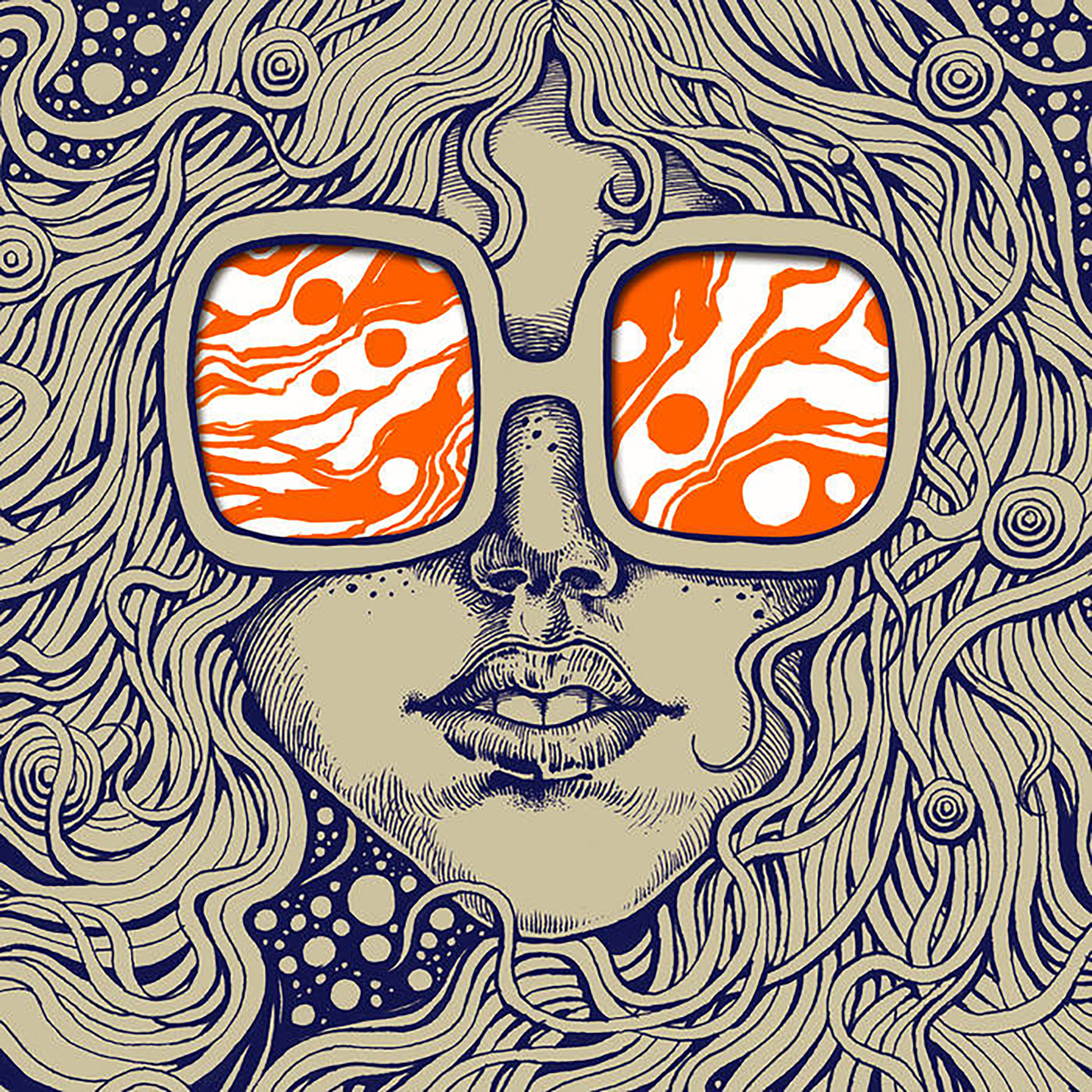 Recorded live at Tokyo’s Super Deluxe club in 2017, this trio's 10th release is dedicated to Hideo Ikeezumi, founder of the incredible P.S.F. label and Modern Music store who died the same day. Mr.Ikeezumi was a fierce and relentless advocate for Japan’s underground scene and an early champion of Haino. For this concert, the three agreed their unrehearsed improvisation would be “electronic” but not which instruments any of them would play. Haino also uses a double-reed horn, the suona, traditionally used in a variety of settings and rituals including funerals, producing blaring, high-pitched sounds for both the living and the dead. I find this a bold, delicate, fascinating, and ultimately rather moving, album; albeit with a title far too long to mention in such a brief review.
Recorded live at Tokyo’s Super Deluxe club in 2017, this trio's 10th release is dedicated to Hideo Ikeezumi, founder of the incredible P.S.F. label and Modern Music store who died the same day. Mr.Ikeezumi was a fierce and relentless advocate for Japan’s underground scene and an early champion of Haino. For this concert, the three agreed their unrehearsed improvisation would be “electronic” but not which instruments any of them would play. Haino also uses a double-reed horn, the suona, traditionally used in a variety of settings and rituals including funerals, producing blaring, high-pitched sounds for both the living and the dead. I find this a bold, delicate, fascinating, and ultimately rather moving, album; albeit with a title far too long to mention in such a brief review.
Other than the suona, it is not always possible to know who is making which sound, and that does not really matter. The important thing is to hear the trio responding to each other brilliantly, without flashiness, and feel the music retaining it's intensity even as the longer pieces take their time to develop. These improvisations have (known and unknown) creative methods by which elements of harmony, melody, and rhythm are achieved. The group's abstract expressionism, unpredictable, coherent, and deliberate, allows gives plenty of opportunity for subjective interpretation. At times I imagined an airtight module in space, at others un-manned train trucks engaged in dubious activities far beneath a mountain. I heard traces of bleeping static buzz and pictured a dystopian wilderness, stalactites thawing and dripping in a radioactive cave, locusts crawling inside air ducts, an astronaut's life support system going into crisis mode, a security patrol blasting horns five light years away, and the feeling of waking from a nap to find the launderette is flooding. As with several albums by the group, it is possible to see Haino as the central figure, perhaps like an actor in a film, with O’Rourke and Ambarchi setting up the lighting, or changing the scenery, but on the other hand things seem nicely balanced, with perfectly equal exchanges. For example, as the suona wails with longer and longer notes like a grief stricken bird crying out into eternity, alternated with passages where Haino must be catching his breath, O’Rourke and Ambarchi provide deeper and lower tones, some gong-like sustain, a section of higher-frequency twinkling and pulsing, slow bass notes and a fading signal.
The shorter final track (of four) is full of whooshing, crackling, echo: a beautiful coda as if the machines somehow continued to play after the trio had gone, suggestive perhaps of a residue of life, or the detection of brain wave activity after physical death. By the way, Dewey Redman used to play the suona (which he called a “musette”) as did Mick Karn, who listed it as a “dida.” I must add that the album cover is stunning - Lasse Marhaug’s photograph from Norway, of the Ellingsrudåsen station on the Oslo metro, line 2. The last stop on the line; the exit that goes into the forest.


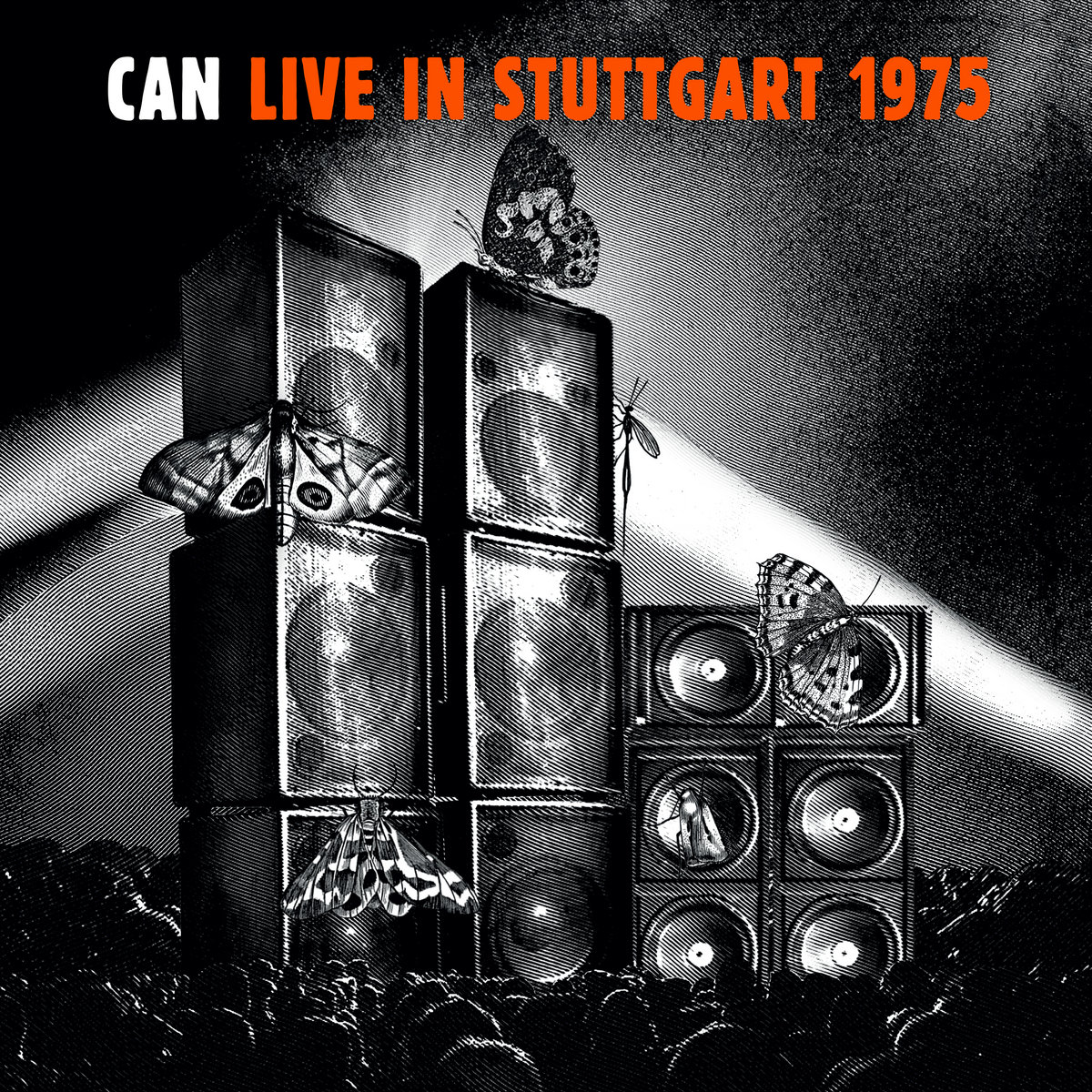 Legendary German kosmiche band Can is not a "hits" band. Despite being known for classic studio work with individual tracks such as "Vitamin C," "Halleluwah," "Mother Sky," and "Future Days," Can, first and foremost, are an improvisational band. While this was a core driver of their studio output, it is particularly evident in their live performances, of which bootlegs of assorted quality exist, noted for never playing a song the same way twice. Singer Damo Suzuki had left the group by this time and Can had released their sixth official studio recording, Landed, an album some fans identify as the marker of Can's slide from greatness. A meticulously produced album, the rock sheen of that studio album could not tell the story of Can's true nature. This polished bootleg — for which we have a devoted fan with large pants to thank — separates the studio mystique from the musicians, showcasing their enduring and practiced talent, revealing the genius of the band's four original members that forever make Can an icon of music history.
Legendary German kosmiche band Can is not a "hits" band. Despite being known for classic studio work with individual tracks such as "Vitamin C," "Halleluwah," "Mother Sky," and "Future Days," Can, first and foremost, are an improvisational band. While this was a core driver of their studio output, it is particularly evident in their live performances, of which bootlegs of assorted quality exist, noted for never playing a song the same way twice. Singer Damo Suzuki had left the group by this time and Can had released their sixth official studio recording, Landed, an album some fans identify as the marker of Can's slide from greatness. A meticulously produced album, the rock sheen of that studio album could not tell the story of Can's true nature. This polished bootleg — for which we have a devoted fan with large pants to thank — separates the studio mystique from the musicians, showcasing their enduring and practiced talent, revealing the genius of the band's four original members that forever make Can an icon of music history.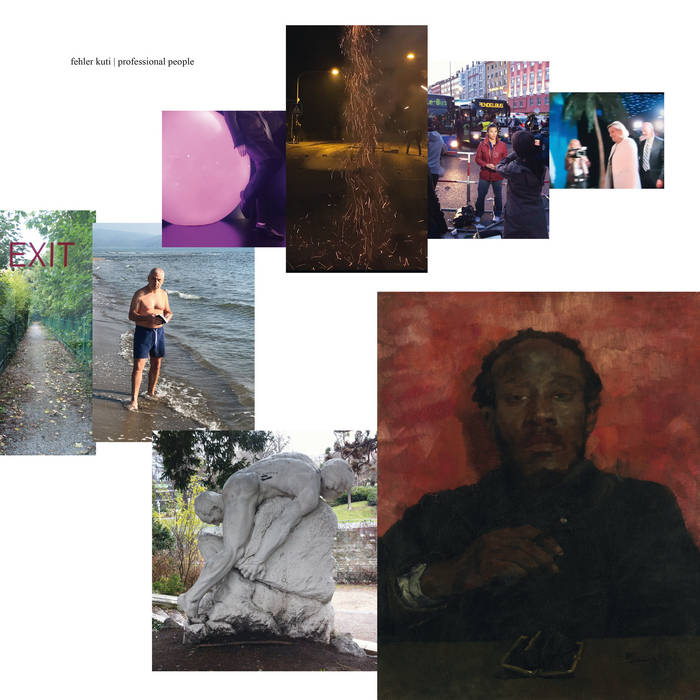 Seeing this release announced as music for "squares" or gated communities, unlikely to appeal to your "woke friends" made me approach it as one might any potential minefield. Learning that Julian Warner, aka Fehler Kuti, is a cultural anthropologist, actor, writer, editor, speaker, art festival curator and producer didn’t lighten the mood much as I feared an onslaught of dry polemic. What a relief then to simply get hooked by these hypnotic tunes - several of which were lullabies for Warner’s newborn child. Professional People reveals as a transcultural concept album, lightly touched with softly spoken wit, 8-bit space jazz, cosmic Euro-pulse, pan, chant, Afro-neon groove, wordless harmony, and melancholic synth. Some of the song titles can act as political signposts, but lyrics are few, mostly oblique, and any message subliminal: hidden in plain sight amid references to bureaucracy, cars, office buildings, home, leisure, gardens, and security. There is no holy indigestible agitprop, no denial of anyone else’s struggle, and Warner leaves academic language and analyses of class, race, and history for the books. He’s razor sharp, but kind, and rather than cutting with words he sprinkles sardonic humor and personal history in with broader observations. The whole record invites everyone to swing along together in our various states of alienated inclusion. Phew. I won’t hear many more enjoyable albums this year.
Seeing this release announced as music for "squares" or gated communities, unlikely to appeal to your "woke friends" made me approach it as one might any potential minefield. Learning that Julian Warner, aka Fehler Kuti, is a cultural anthropologist, actor, writer, editor, speaker, art festival curator and producer didn’t lighten the mood much as I feared an onslaught of dry polemic. What a relief then to simply get hooked by these hypnotic tunes - several of which were lullabies for Warner’s newborn child. Professional People reveals as a transcultural concept album, lightly touched with softly spoken wit, 8-bit space jazz, cosmic Euro-pulse, pan, chant, Afro-neon groove, wordless harmony, and melancholic synth. Some of the song titles can act as political signposts, but lyrics are few, mostly oblique, and any message subliminal: hidden in plain sight amid references to bureaucracy, cars, office buildings, home, leisure, gardens, and security. There is no holy indigestible agitprop, no denial of anyone else’s struggle, and Warner leaves academic language and analyses of class, race, and history for the books. He’s razor sharp, but kind, and rather than cutting with words he sprinkles sardonic humor and personal history in with broader observations. The whole record invites everyone to swing along together in our various states of alienated inclusion. Phew. I won’t hear many more enjoyable albums this year. I initially slept on this album, as the prosaic title made it sound like a collection of old and orphaned songs rather than a minor sound collage masterpiece. The former would be just fine by me (in a non-urgent way), but the fact that this album is actually the latter completely blindsided me. As the label puts it, Collin pulled "shining diamonds from his discography" and put them "in a new context with more recently recorded segments." In more practical terms, this means that the album beautifully bleeds together ephemeral highlights from Collin's discography into a soulfully mesmerizing, endlessly evolving impressionist fantasia. In its most striking moments, Music From Cassettes, Etc. makes me feel like I am a Dickensian ghost experiencing all the warmest moments from Collin's life through a flickering projector.
I initially slept on this album, as the prosaic title made it sound like a collection of old and orphaned songs rather than a minor sound collage masterpiece. The former would be just fine by me (in a non-urgent way), but the fact that this album is actually the latter completely blindsided me. As the label puts it, Collin pulled "shining diamonds from his discography" and put them "in a new context with more recently recorded segments." In more practical terms, this means that the album beautifully bleeds together ephemeral highlights from Collin's discography into a soulfully mesmerizing, endlessly evolving impressionist fantasia. In its most striking moments, Music From Cassettes, Etc. makes me feel like I am a Dickensian ghost experiencing all the warmest moments from Collin's life through a flickering projector.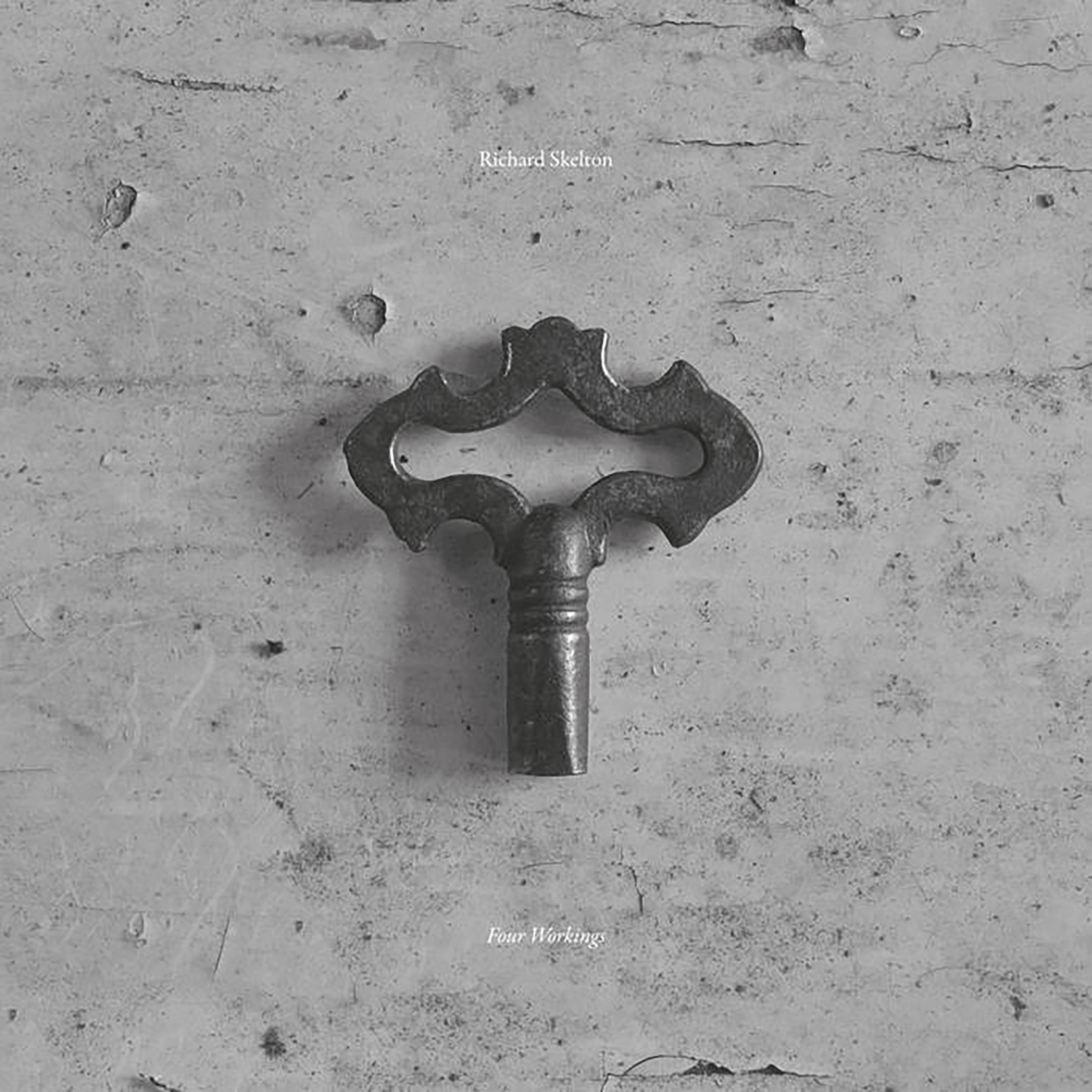 This latest album from Skelton seems intended to be a major new statement, though not quite a formal follow-up to last year's These Charms May be Sung Over a Wound, as double LPs are a real rarity in the prolific composer's discography. If it was not intended as such, it certainly has the ambitious conceptual framework and focused power of his strongest work. For these four pieces, Skelton used a self-devised divination deck of Proto-Indo-European word roots for inspiration, making the album the fruit of an occult-tinged and antiquarian word game. Skelton also maintained the same restricted palette and duration for each piece, yet the tone varies significantly between them, as he treated each composition as a meditation upon a single, unvoiced question. To some degree, Four Workings is an especially ambient-minded release, as the hypnotically repeating melodic fragments are reminiscent of Celer's most loop-driven fare. The similarities mostly end there, however, as the billowing ambiance is often a smokescreen for a more sharp-edged and sophisticated undercurrent that slowly emerges from the murky depths. This is an unusually strong suite of compositions for Skelton's current phase, and the first piece in particular is probably among his finest moments to date.
This latest album from Skelton seems intended to be a major new statement, though not quite a formal follow-up to last year's These Charms May be Sung Over a Wound, as double LPs are a real rarity in the prolific composer's discography. If it was not intended as such, it certainly has the ambitious conceptual framework and focused power of his strongest work. For these four pieces, Skelton used a self-devised divination deck of Proto-Indo-European word roots for inspiration, making the album the fruit of an occult-tinged and antiquarian word game. Skelton also maintained the same restricted palette and duration for each piece, yet the tone varies significantly between them, as he treated each composition as a meditation upon a single, unvoiced question. To some degree, Four Workings is an especially ambient-minded release, as the hypnotically repeating melodic fragments are reminiscent of Celer's most loop-driven fare. The similarities mostly end there, however, as the billowing ambiance is often a smokescreen for a more sharp-edged and sophisticated undercurrent that slowly emerges from the murky depths. This is an unusually strong suite of compositions for Skelton's current phase, and the first piece in particular is probably among his finest moments to date.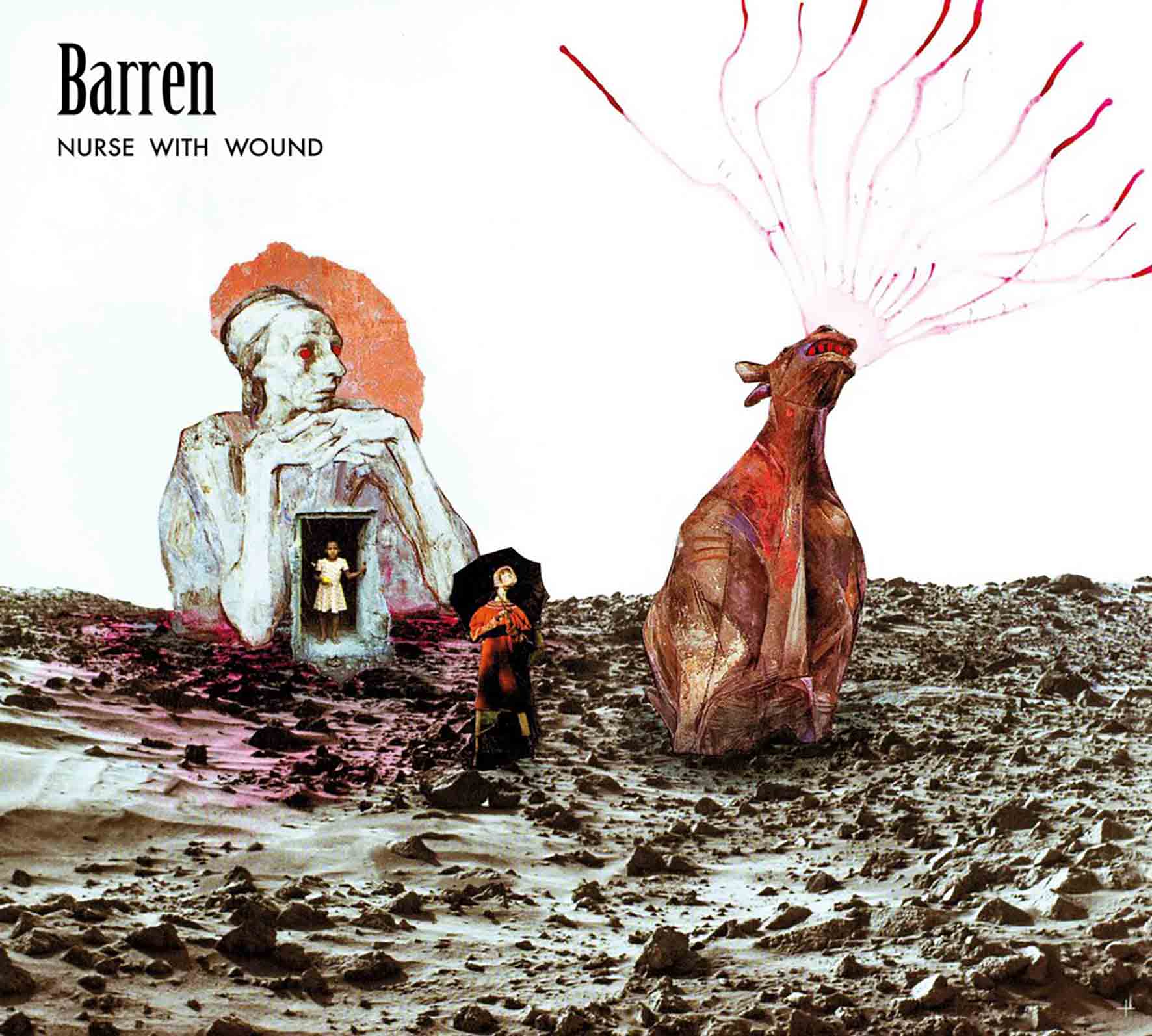 This double album had the misfortune of being released near the end of 2020, so it lamentably did not quite get the attention that it deserved (and being a live album probably did not help matters much either).  Granted, it has admittedly been a while since the NWW camp dropped an album that I would breathlessly proclaim a stone-cold masterpiece, yet the project's current era features quite a formidable lineup. In fact, most United Dairies/ICR releases in recent years have been refreshingly solid for an entity with such a vast and historically erratic discography. Barren happily continues that trend, documenting two performances from differing lineup configurations that have been deemed "amongst their most unusual performances." In this context, however, "unusual" means "very professional-sounding longform works conspicuously free of sinister whimsy." Significantly, the two performances are almost unrecognizable as NWW despite cannibalizing a pair of studio releases. They make for quite a satisfying deep-psych/spaced-out ambient release in their own right, however, as there is no rule stating that albums need to be representative to be enjoyable.
This double album had the misfortune of being released near the end of 2020, so it lamentably did not quite get the attention that it deserved (and being a live album probably did not help matters much either).  Granted, it has admittedly been a while since the NWW camp dropped an album that I would breathlessly proclaim a stone-cold masterpiece, yet the project's current era features quite a formidable lineup. In fact, most United Dairies/ICR releases in recent years have been refreshingly solid for an entity with such a vast and historically erratic discography. Barren happily continues that trend, documenting two performances from differing lineup configurations that have been deemed "amongst their most unusual performances." In this context, however, "unusual" means "very professional-sounding longform works conspicuously free of sinister whimsy." Significantly, the two performances are almost unrecognizable as NWW despite cannibalizing a pair of studio releases. They make for quite a satisfying deep-psych/spaced-out ambient release in their own right, however, as there is no rule stating that albums need to be representative to be enjoyable.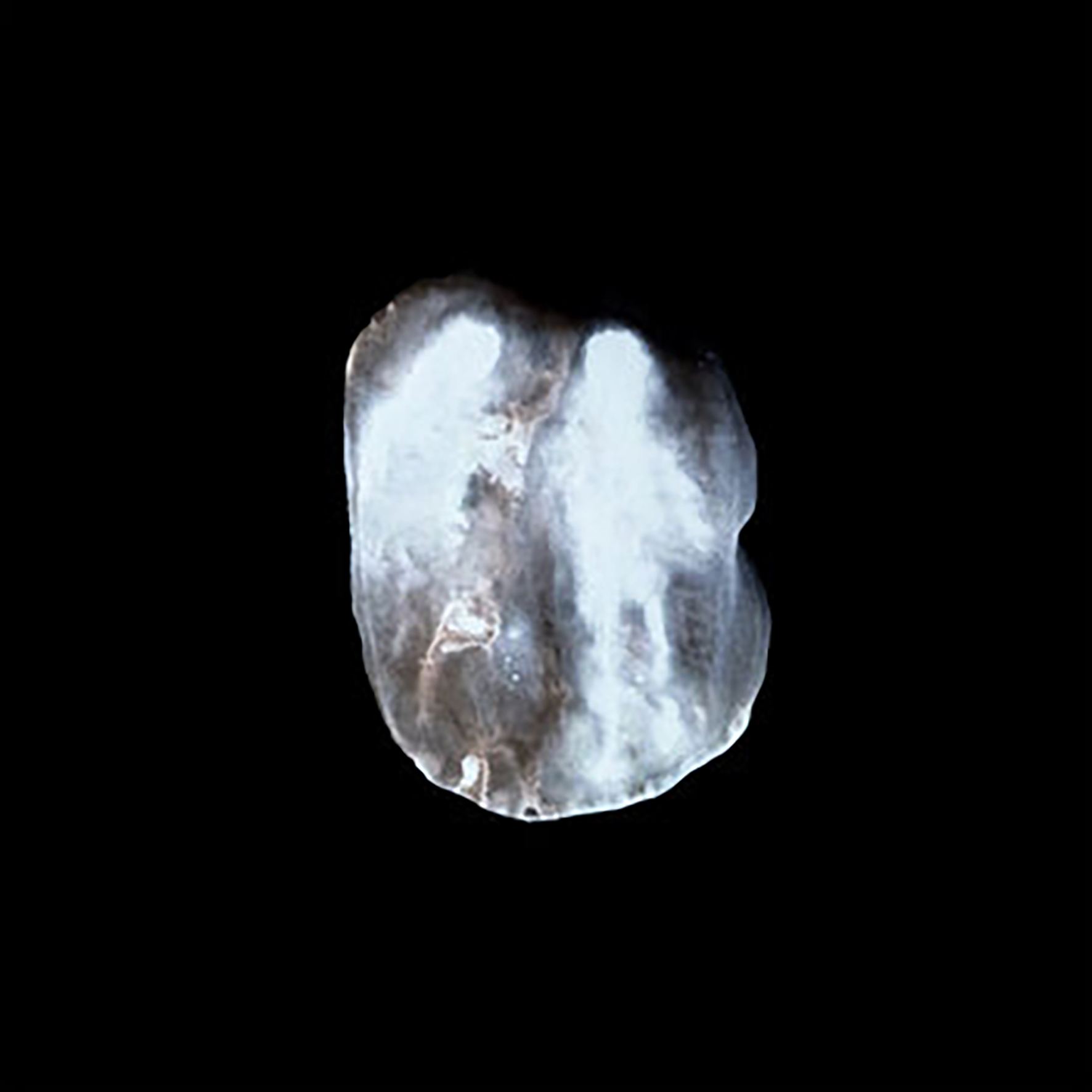 This second album from Milan-based visual artist/electro-acoustic composer Domiziano Maselli can be a disorienting collision of disparate inspirations at times, but it is certainly an intensely visceral and compelling experience when it hits the mark. Opal's description of the album mentions that Maselli possesses an "uncanny skill to create non-conformist drama," which feels like an apt characterization. It is similarly fair to say that Maselli likely has an extreme fondness for the gloomy prime of artists like Haxan Cloak and Raime, as well as a deep appreciation for Emptyset's seismic and intense approach to sound design. Elements of all three are certainly present on Lazzaro, though Maselli proves quite adept at building upon their best bits. That said, there are also a few pieces that radically break from the influences Maselli wears on his sleeve and they are uniformly brilliant. In one case, he approximates a massive contraption of slowly whirling jagged, rusted metal blades, while elsewhere he unleashes something akin to a demonically possessed string quartet hellbent on conjuring the darkest psychedelia. For me, Lazarro is a very strong album for those two pieces alone, but his execution for everything else is quite impressive as well.
This second album from Milan-based visual artist/electro-acoustic composer Domiziano Maselli can be a disorienting collision of disparate inspirations at times, but it is certainly an intensely visceral and compelling experience when it hits the mark. Opal's description of the album mentions that Maselli possesses an "uncanny skill to create non-conformist drama," which feels like an apt characterization. It is similarly fair to say that Maselli likely has an extreme fondness for the gloomy prime of artists like Haxan Cloak and Raime, as well as a deep appreciation for Emptyset's seismic and intense approach to sound design. Elements of all three are certainly present on Lazzaro, though Maselli proves quite adept at building upon their best bits. That said, there are also a few pieces that radically break from the influences Maselli wears on his sleeve and they are uniformly brilliant. In one case, he approximates a massive contraption of slowly whirling jagged, rusted metal blades, while elsewhere he unleashes something akin to a demonically possessed string quartet hellbent on conjuring the darkest psychedelia. For me, Lazarro is a very strong album for those two pieces alone, but his execution for everything else is quite impressive as well. 1988's Love Hysteria was my introduction to Peter Murphy as a solo artist, likely initiated by MTV's 120 Minutes airplay of "All Night Long." A minor hit in the United States, this and a host of other strong tracks from Murphy's second solo release would see Murphy exposed to a renewed audience as a solo performer, those both unfamiliar and familiar with his back catalog. Some of this may be attributable to the start of Murphy's songwriting collaboration with Paul Statham (ex B-Movie). This fruitful union would see the two working together for another six albums, producing some of his best-loved works over the next few years. This work alone spawned the aforementioned "All Night Long" as well as masterworks "Indigo Eyes," "Dragnet Drag," and "Blind Sublime."
1988's Love Hysteria was my introduction to Peter Murphy as a solo artist, likely initiated by MTV's 120 Minutes airplay of "All Night Long." A minor hit in the United States, this and a host of other strong tracks from Murphy's second solo release would see Murphy exposed to a renewed audience as a solo performer, those both unfamiliar and familiar with his back catalog. Some of this may be attributable to the start of Murphy's songwriting collaboration with Paul Statham (ex B-Movie). This fruitful union would see the two working together for another six albums, producing some of his best-loved works over the next few years. This work alone spawned the aforementioned "All Night Long" as well as masterworks "Indigo Eyes," "Dragnet Drag," and "Blind Sublime." This collection of (mostly) acapella field recordings from Kink Gong's Laurent Jeanneau truly emphasizes the "sublime" part of the Sublime Frequencies vision, as this is quite an eerily lovely and mesmerizing album. While the recordings span three different countries (China, Laos, and Vietnam), they are all roughly rooted in a single cultural milieu: the Chinese hill tribes known pejoratively as the Yao ("dog" or "savage"). Understandably, a large number of these tribal folk prefer the name Mien ("people"), but they are a multifarious bunch that have spread beyond China into Southeast Asia and evolved into numerous distinctive and divergent subcultures. The first half of the album is devoted to very pure and simple canon singing ("an initial melody is imitated at a specified time interval by one or more parts"), while the second half offers some compelling and more fleshed-out variations. While the "raw, ethereal, and cosmic" performances that Laurent captured need no additional enhancement to captivate me, the variations are every bit as great as the undiluted essence and give the album an impressively strong dynamic arc.
This collection of (mostly) acapella field recordings from Kink Gong's Laurent Jeanneau truly emphasizes the "sublime" part of the Sublime Frequencies vision, as this is quite an eerily lovely and mesmerizing album. While the recordings span three different countries (China, Laos, and Vietnam), they are all roughly rooted in a single cultural milieu: the Chinese hill tribes known pejoratively as the Yao ("dog" or "savage"). Understandably, a large number of these tribal folk prefer the name Mien ("people"), but they are a multifarious bunch that have spread beyond China into Southeast Asia and evolved into numerous distinctive and divergent subcultures. The first half of the album is devoted to very pure and simple canon singing ("an initial melody is imitated at a specified time interval by one or more parts"), while the second half offers some compelling and more fleshed-out variations. While the "raw, ethereal, and cosmic" performances that Laurent captured need no additional enhancement to captivate me, the variations are every bit as great as the undiluted essence and give the album an impressively strong dynamic arc.